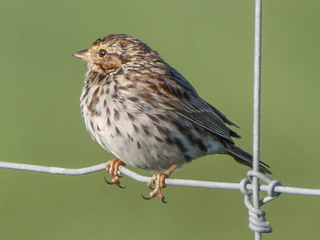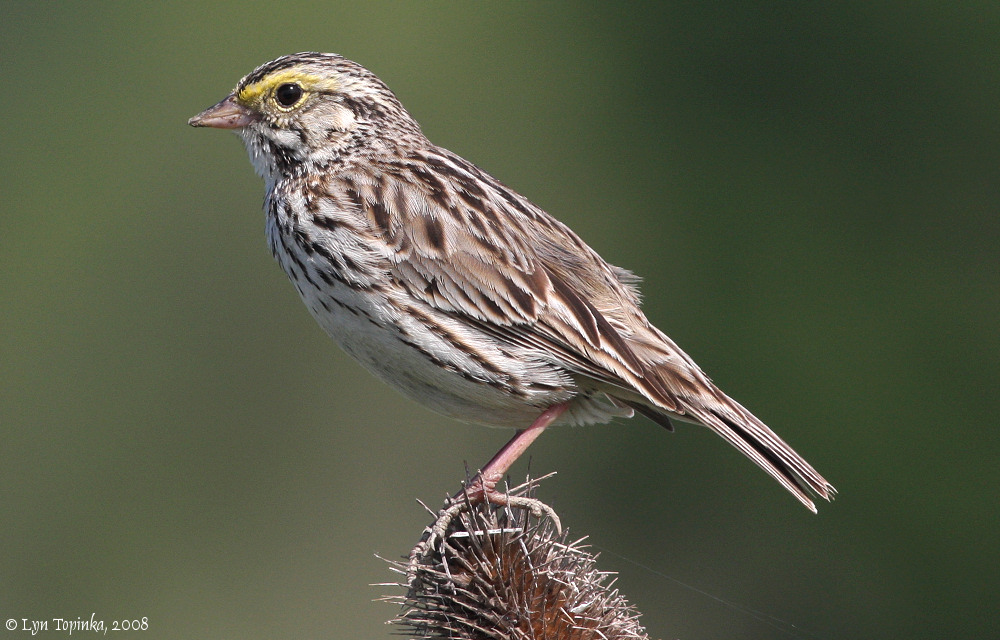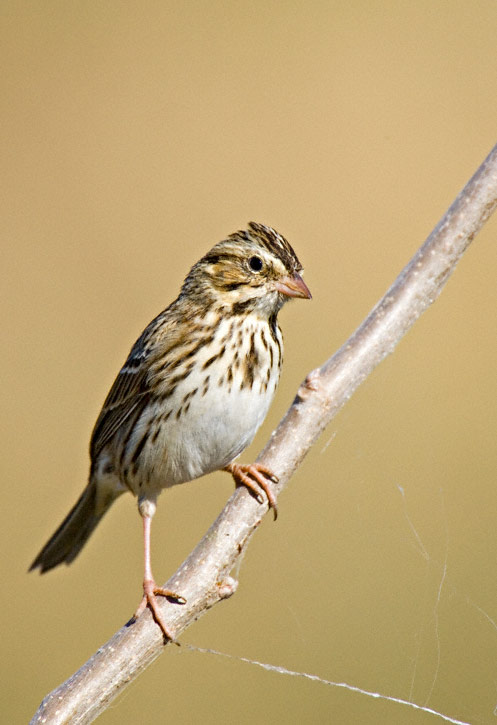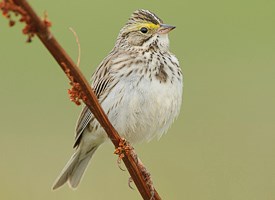
Passerculus sandwichensis
TAXONOMY
Emberiza sandwichensis Gmelin, 1789, Unalaska, Alaska.
Twenty-one subspecies.
OTHER COMMON NAMES
English: Belding’s sparrow, Bryant’s sparrow, Ipswich sparrow,
large-billed sparrow, marsh sparrow, San Benito sparrow, seashore
sparrow; French: Bruant des prйs; German: Grasammer;
Spanish: Sabanero Zanjero.
PHYSICAL CHARACTERISTICS
4.6–6 in (11–15 cm); 0.6–1.1 oz (17–30 g). Typically brown or
dark brown streaked on the back and breast, with pink legs, a
yellow stripe above the eye, a pale median crown stripe, and a
rather short, notched tail. Sexes are alike in color, but they are
geographically variable.
DISTRIBUTION
Breeds from northern Alaska, northern Canada (absent on the
arctic islands), south to northern Georgia, the central Great
Plains, and south in the mountains to Guatemala. They winter
along the east coast of the United States, west through the
central Plains, and south to northern Central America. They
are resident along the west coast from southern British Columbia
south to southern Baja California, along the west coast of
Mexico, south to central Sinaloa, and in the highlands of central
Mexico.
HABITAT
Inhabit open country, such as grassy meadows, cultivated
fields, pastures, roadsides, sedge bogs, the edge of salt marshes,
and tundra.
BEHAVIOR
Found in pairs and family groups in summer. Territorial males
typically sing from an exposed perch. On the ground they run
or hop. During migration and winter they can be found in
small, loose flocks. Flight is strong and direct.
FEEDING ECOLOGY AND DIET
In summer, they eat a variety of invertebrates, especially insects,
but also some seeds and fruit. In winter, they principally
eat seeds. They forage on the ground, low in bushes
and weeds, or along the tide line on beaches and in beach
wrack.
REPRODUCTIVE BIOLOGY
Generally monogamous, but in some populations a male may
have two mates (bigamy). The nest is a woven cup of grasses
and other vegetation that is placed on the ground or in a slight
depression and is partly covered by grasses and other vegetation.
Two to six (usually four to five) eggs are laid from February
to August. Incubation usually lasts about 12 days, and
young usually fledge after 10–12 days. Both parents feed the
young.
CONSERVATION STATUS
Common throughout its range, but declining in eastern North
America as marginal pastures are reverting to woodland.
SIGNIFICANCE TO HUMANS
None known.
Other popular Animals
Photo Gallery of - Savannah sparrow




 Animalia Life
Animalia Life